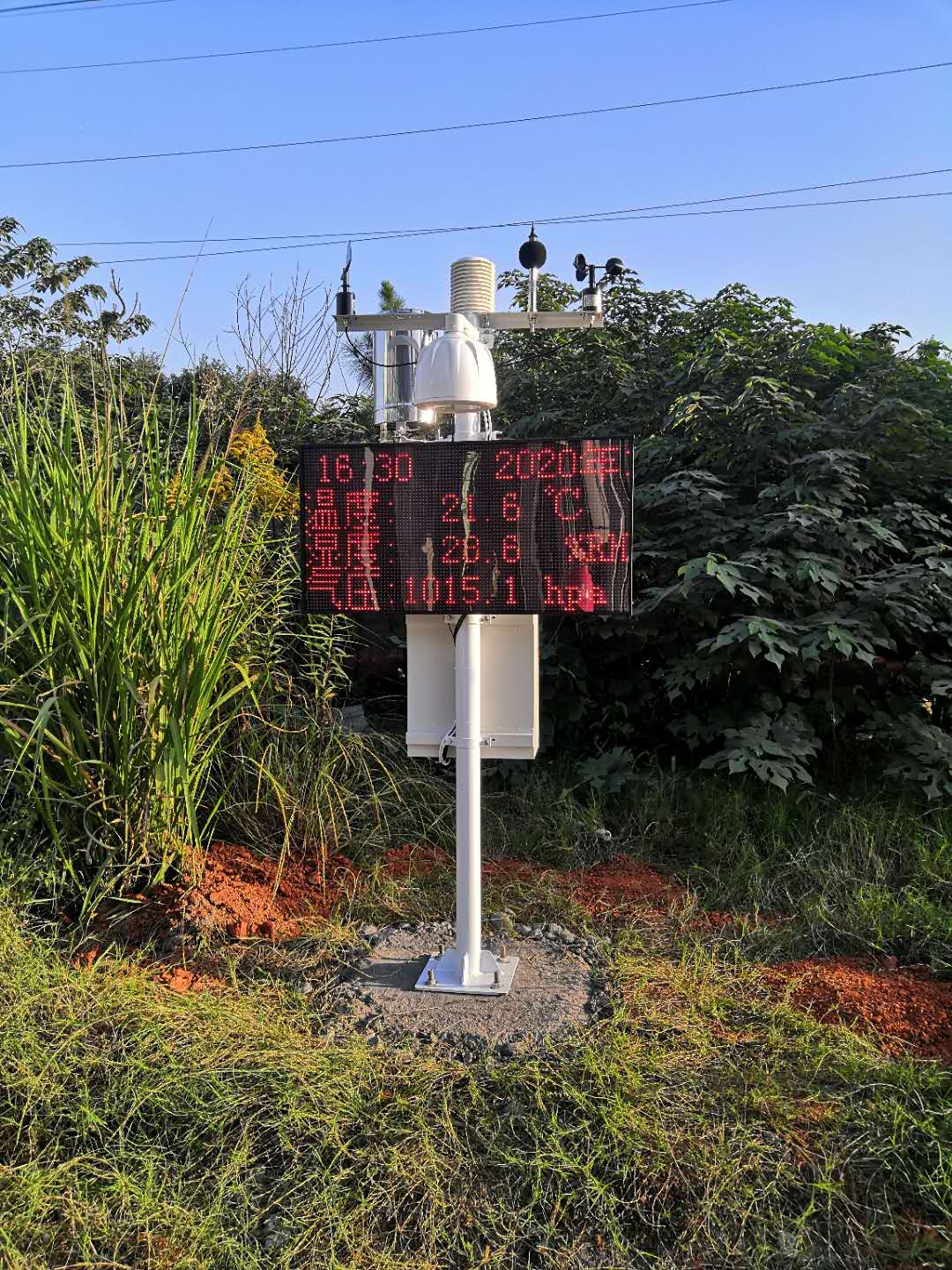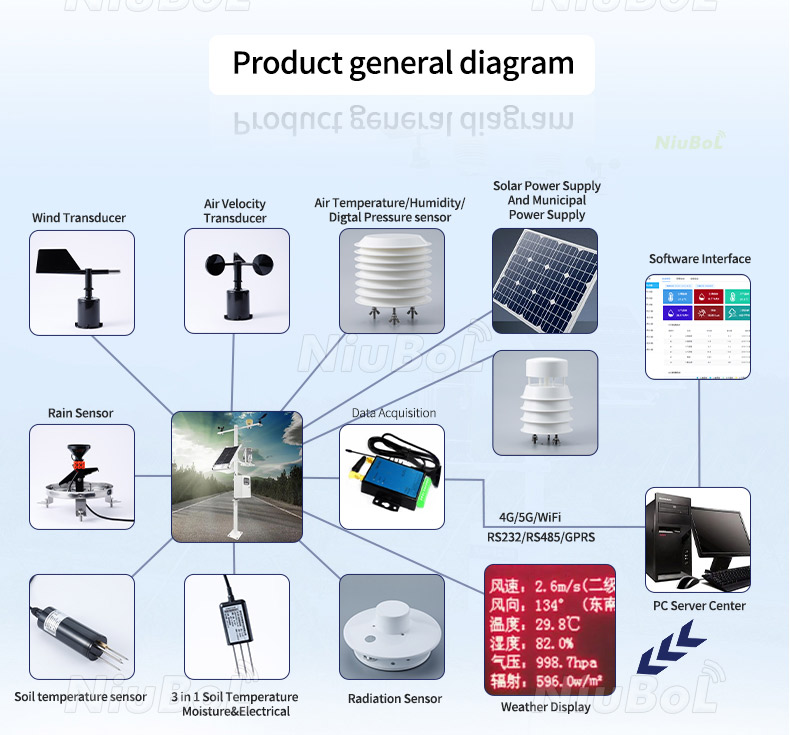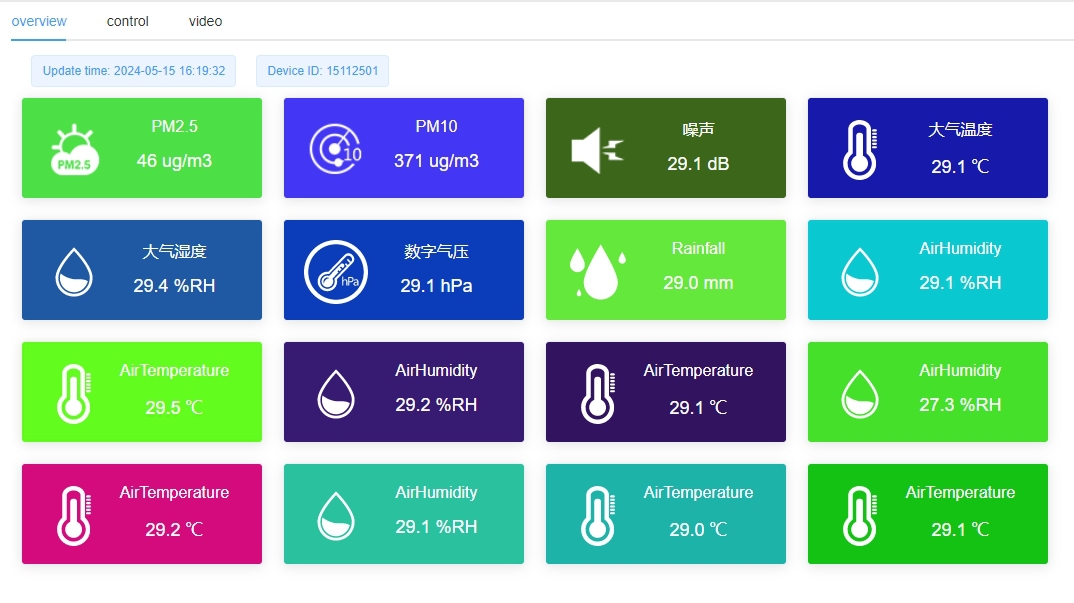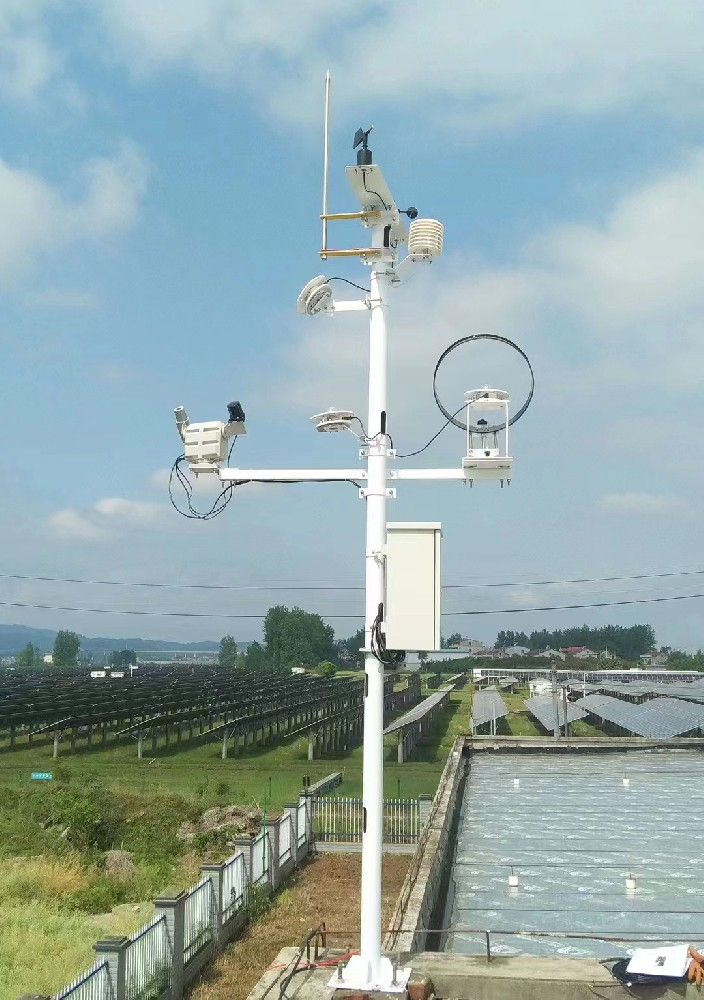

— Blogs —
—Products—
 Consumer hotline +8618073152920
Consumer hotline +8618073152920 WhatsApp:+8615367865107
Address:Room 102, District D, Houhu Industrial Park, Yuelu District, Changsha City, Hunan Province, China
Technical Support
Time:2025-11-17 09:20:25 Popularity:170
Before installation, thorough product and construction checks are essential to ensure smooth setup and accurate data.

Connect power lines according to standards: phase (L), neutral (N), and ground (GND) to prevent misconnections or leakage.
Inspect wiring neatness and check for wear or pull marks.
Complete base, cable trench, and grounding system per design standards.
Grounding resistance should meet requirements (generally ≤10Ω) for effective lightning protection.
Allow base concrete to cure for at least 28 days to reach design strength.
Use a rebound hammer or lab methods to confirm hardening.
Ensure no obstructions around the observation field to avoid interference with wind speed, direction, and rainfall measurements.
Ground should be level, free of water accumulation or sand piles for easy long-term maintenance.
Check for damage, scratches, or missing parts during transit.
Count packaging boxes and verify against the shipping list.
Confirm quantities and specifications of screws, brackets, and small accessories.
Ensure all sensors, controllers, communication modules, and accessories are present.
Use a multimeter or simple testing tools to preliminarily check power-on status.
After completing construction and product checks, installers should thoroughly review the user manual, wiring diagrams, and sensor instructions before formal installation.
- Install at a height of generally 10 meters or more, away from buildings, trees, or other obstacles.
- Mount the wind vane horizontally, ensuring smooth rotation without jamming.
- Secure the bracket with reliable grounding to prevent damage from wind or lightning.
- Install away from obstructions and keep level.
- Regularly inspect the rain gauge to prevent blockages from water or debris.
- Tilting or water accumulation in the sensor will cause significant data errors.
- Install inside a louvered box to avoid direct sunlight and rain.
- Use a clean fine brush to remove dust or spider webs; do not touch sensitive components by hand.
- Perform maintenance outside peak hours and extreme value periods to ensure data continuity.
- Follow manufacturer instructions for installation depth or orientation.
- Ensure stable connections between sensors and data acquisition terminals to avoid data loss from loose wiring.

Compact weather stations operate outdoors long-term, facing rain, hail, high temperatures, and severe cold. Proper maintenance extends equipment life and ensures data accuracy.
Regularly inspect bracket stability to prevent tilting or collapse from wind or external forces.
Check for loose or corroded bases, bolts, and fixtures.
Routinely review data from wind speed, direction, rainfall, temperature, and humidity sensors; contact the manufacturer promptly for anomalies.
Ensure no dust, spider webs, or debris affect measurements.
Clean temperature and humidity sensor surfaces with a clean fine brush; prohibit direct hand contact with sensitive parts.
Perform maintenance inside the louvered box to minimize environmental interference.
Avoid operations near hour marks or extreme value periods to maintain data continuity and reliability.
Observers must strictly follow procedures and enhance emergency fault-handling skills for automatic weather stations.
Regularly train on equipment repair and maintenance to enable timely troubleshooting.

| Season | Maintenance Focus | Recommended Operations |
| Spring | Wind and sand impact | Check bracket stability, clean wind speed and direction sensors |
| Summer | Heavy rain and lightning | Inspect rainfall sensor, enhance grounding and lightning protection |
| Autumn | Fallen leaves and debris | Clean sensors, louvered box, and rain gauge |
| Winter | Low temperatures and icing | Check anti-freeze measures for sensors, ensure power lines are free of frost damage |
- Cause: Sensor damage or loose bracket
- Solution: Check for jammed blades or rotors, re-secure the bracket
- Cause: Blocked or tilted rain gauge
- Solution: Clear water and debris, adjust to level
- Cause: Sensor contamination or wiring errors
- Solution: Clean sensor, check wiring and power supply
- Cause: Poor line contact or communication module failure
- Solution: Inspect lines and interfaces; replace module if necessary

Inspect brackets, sensors, and power lines at least quarterly; monitor key sensors for data anomalies monthly.
The bracket must be vertical and stable to avoid wind influence, with reliable grounding and foundation concrete meeting design strength.
Compare with historical data or perform calibration tests; contact the manufacturer for anomalies.
Regularly clean the rain gauge and funnel mouth, maintain level installation to avoid water and debris accumulation.
Hand oils or moisture can affect accuracy, leading to increased measurement errors over time.
Ensure good grounding during installation, add lightning arresters, and arrange lines safely.
Standardized power wiring, completed base and grounding, concrete strength meeting requirements.
First check appearance and installation, then wiring and power; contact manufacturer technical support if needed.
The installation and maintenance of compact weather stations is a systematic process involving product acceptance, construction checks, sensor maintenance, and data monitoring. Scientific and standardized installation with regular maintenance significantly reduces failure rates and improves data accuracy and stability.
NiuBoL provides professional weather station products and installation services, ensuring every compact weather station operates efficiently long-term, delivering reliable data support for agriculture, scientific research, tourism, and urban management.
Proper installation and maintenance not only extend equipment lifespan but also enhance the scientificity and reliability of data, enabling truly precise, efficient, and intelligent weather monitoring.
Prev:How to Connect an RS485 Sensor to a Collector and Transmit Data to the Cloud Platform?
Next:no more
Related recommendations
Sensors & Weather Stations Catalog
Agriculture Sensors and Weather Stations Catalog-NiuBoL.pdf
Weather Stations Catalog-NiuBoL.pdf
Related products
 Combined air temperature and relative humidity sensor
Combined air temperature and relative humidity sensor Soil Moisture Temperature sensor for irrigation
Soil Moisture Temperature sensor for irrigation Soil pH sensor RS485 soil Testing instrument soil ph meter for agriculture
Soil pH sensor RS485 soil Testing instrument soil ph meter for agriculture Wind Speed sensor Output Modbus/RS485/Analog/0-5V/4-20mA
Wind Speed sensor Output Modbus/RS485/Analog/0-5V/4-20mA Tipping bucket rain gauge for weather monitoring auto rainfall sensor RS485/Outdoor/stainless steel
Tipping bucket rain gauge for weather monitoring auto rainfall sensor RS485/Outdoor/stainless steel Pyranometer Solar Radiation Sensor 4-20mA/RS485
Pyranometer Solar Radiation Sensor 4-20mA/RS485
Screenshot, WhatsApp to identify the QR code
WhatsApp number:+8615367865107
(Click on WhatsApp to copy and add friends)
